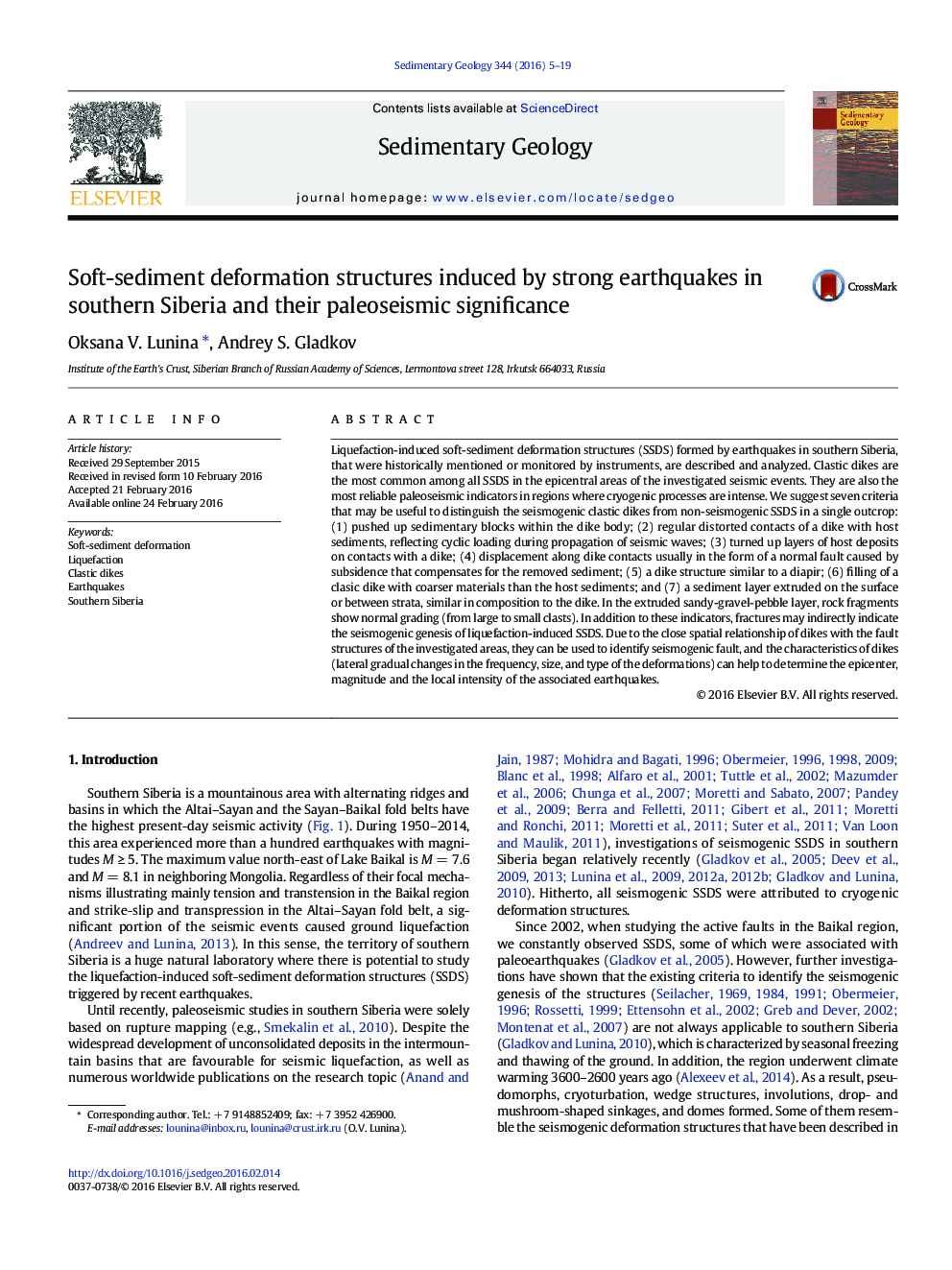| کد مقاله | کد نشریه | سال انتشار | مقاله انگلیسی | نسخه تمام متن |
|---|---|---|---|---|
| 4688945 | 1636019 | 2016 | 15 صفحه PDF | دانلود رایگان |
• We provide insight into earthquake-triggered liquefaction in southern Siberia.
• We describe SSDS associated with some recent seismic events.
• We suggest criteria to separate the seismogenic dikes from non-seismogenic SSDS.
• These criteria make dikes a reliable indicator of paleoseismicity.
• Fractures and sinkholes may indirectly also point at a seismic origin of dike.
Liquefaction-induced soft-sediment deformation structures (SSDS) formed by earthquakes in southern Siberia, that were historically mentioned or monitored by instruments, are described and analyzed. Clastic dikes are the most common among all SSDS in the epicentral areas of the investigated seismic events. They are also the most reliable paleoseismic indicators in regions where cryogenic processes are intense. We suggest seven criteria that may be useful to distinguish the seismogenic clastic dikes from non-seismogenic SSDS in a single outcrop: (1) pushed up sedimentary blocks within the dike body; (2) regular distorted contacts of a dike with host sediments, reflecting cyclic loading during propagation of seismic waves; (3) turned up layers of host deposits on contacts with a dike; (4) displacement along dike contacts usually in the form of a normal fault caused by subsidence that compensates for the removed sediment; (5) a dike structure similar to a diapir; (6) filling of a clasic dike with coarser materials than the host sediments; and (7) a sediment layer extruded on the surface or between strata, similar in composition to the dike. In the extruded sandy-gravel-pebble layer, rock fragments show normal grading (from large to small clasts). In addition to these indicators, fractures may indirectly indicate the seismogenic genesis of liquefaction-induced SSDS. Due to the close spatial relationship of dikes with the fault structures of the investigated areas, they can be used to identify seismogenic fault, and the characteristics of dikes (lateral gradual changes in the frequency, size, and type of the deformations) can help to determine the epicenter, magnitude and the local intensity of the associated earthquakes.
Figure optionsDownload high-quality image (289 K)Download as PowerPoint slide
Journal: Sedimentary Geology - Volume 344, October 2016, Pages 5–19
